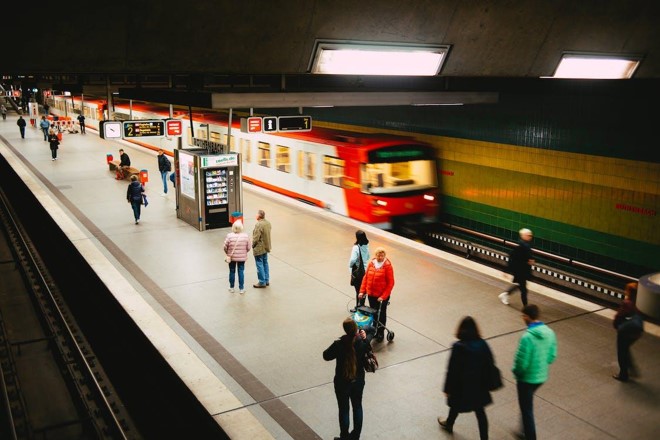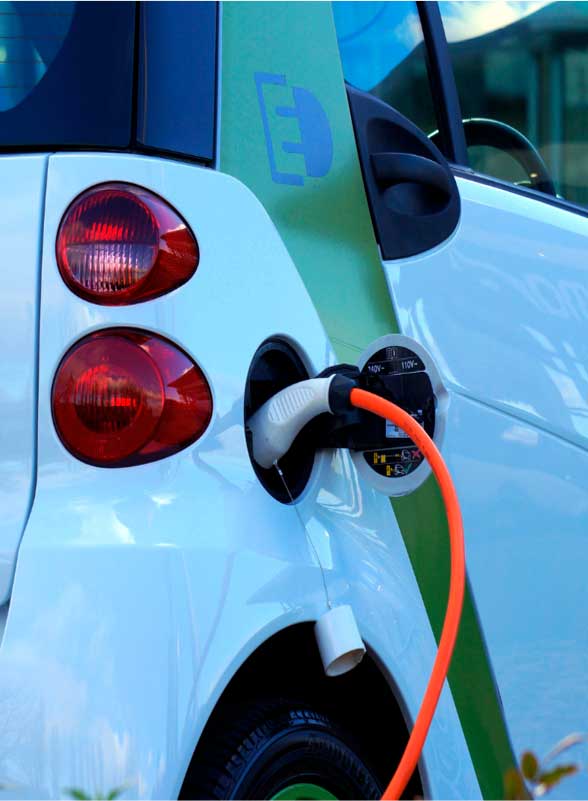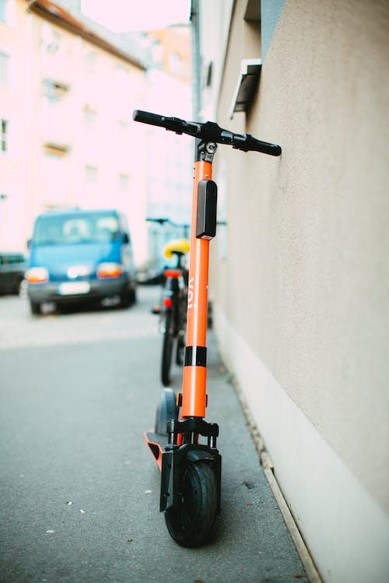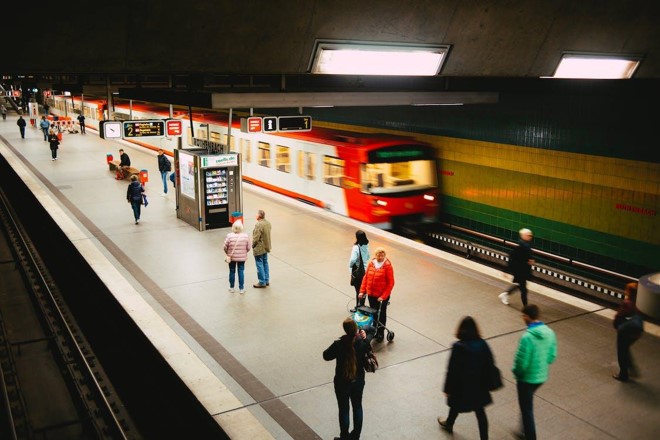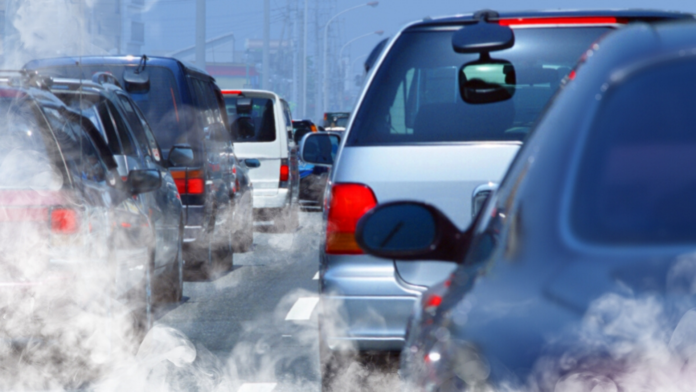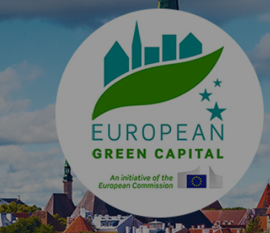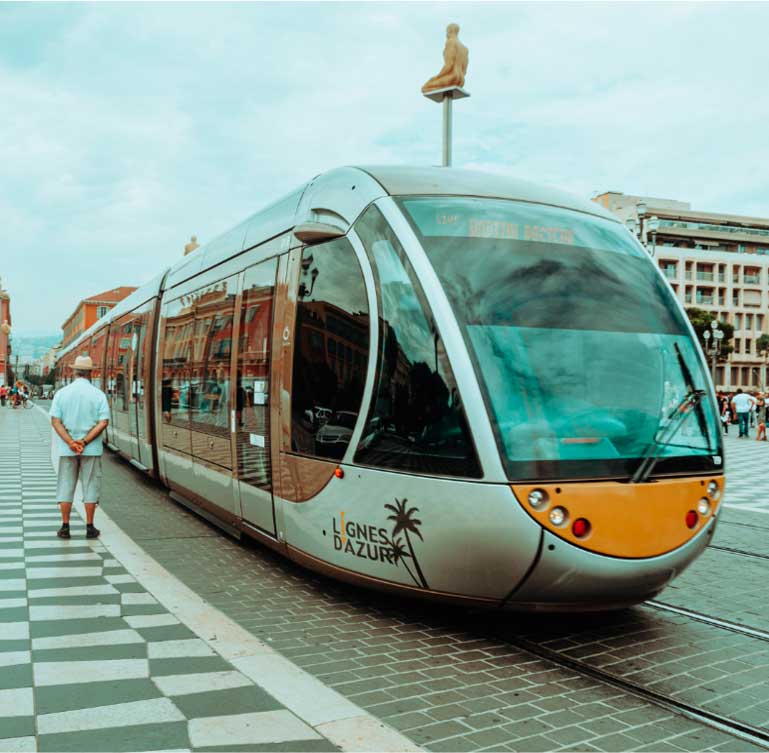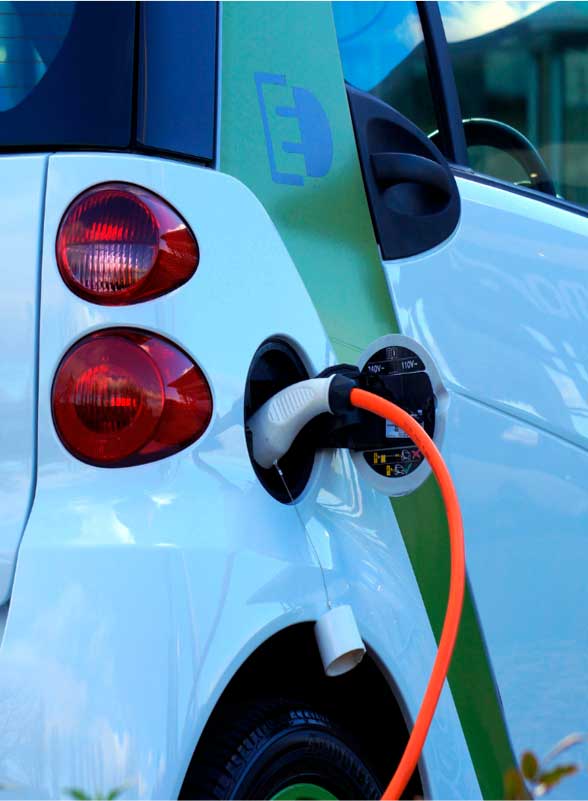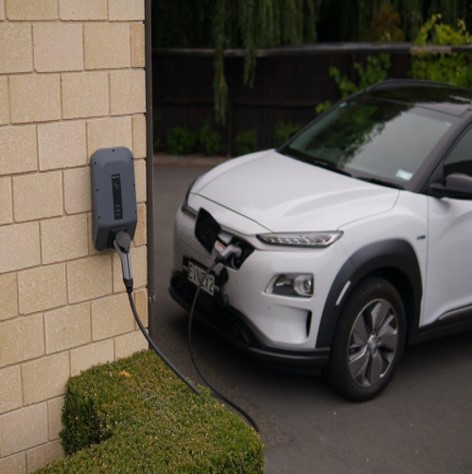EduCARE
Responsible consumption on mobility
Basic|
VIDEOS

| ||||||||||||||||||||||||
|
Responsible consumption on mobilityClick to read
 Introduction:
Sustainable mobility refers to a method of transportation that is intimately connected to the idea of territorial sustainability and, as a result, is focused on lowering pollution risks and pollution power, preserving public health and space as a shared good, and conserving energy. By undertaking numerous initiatives, such as promoting environmentally friendly, easily accessible, and intelligent public and private transportation, Next Generation EU will play a significant part in making Europe the first climate-neutral continent by 2050. To support the transition to cleaner, greener and smarter mobility, in line with the objectives of the European Green Deal, the Commission adopted four proposals that will modernise the EU transport system: a smart and sustainable TEN-T (Trans-European Network – Transport), Increasing long-distance and cross-border rail traffic, intelligent transport services for drivers, cleaner, greener, easier urban mobility. Topic development:The definition provided by the European Union Council of Ministers of Transport defines a sustainable mobility system as one that: - Allows the basic access and development needs of individuals, companies and society to be met safely and in a manner consistent with human and ecosystem health, and promotes equity within and between successive generations - Is affordable, operates fairly and efficiently, offers a choice of transport mode, and supports a competitive economy, as well as balanced regional development. - Limits emissions and waste within the planet’s ability to absorb them, uses renewable sources at or below their rates of generation, and uses non-renewable resources at or below the rates of development of renewable substitutes, while minimizing the impact on the use of land and the generation of noise.
Sustainable mobility has environmental, social and economic impacts:
A sustainable transformation of the world's transportation system might result in savings of up to USD 70 trillion by 2050, according to the report Mobilizing Sustainable Transport for Development that was given to UN Secretary General Ban Ki-moon. A 4.7% rise in the world GDP might be attained with the development of integrated port terminals, better airport planning, and simplified border crossing laws. Good practices:CARNET: Mobility at the service of cities and citizens CARNET is a pioneering project in which the public sector (the Universitat Politècnica de Catalunya) and the private sector (SEAT and Volkswagen) collaborate in activities that contribute to the design of future urban mobility. Other companies and organisations such as Altran, Applus Idiada, Ficosa, RACC and Rücker Lypsa have become members of CARNET. CARNET’s activities are focused on three main areas: ●Identifying and fostering talent through a variety of training courses. ●Carrying out corporate research to develop innovation projects. ●Networking in national and international networks in the sector.
This business was founded in Israel as an Israeli start-up and is currently owned by Intel through one of its subsidiaries. It is a global leader in MaaS (Mobility as a Service) and travel planning products. The software enables users to plan routes, select the most practical routes and modes of transportation, and pay for selected transportation services straight from their smartphones. The software from Moovit combines crowdsourced (data contributed by people through the network) and official public transit data to deliver real-time information on public transportation services (trains, buses and trams). Data on a variety of shared service and micro-mobility providers, including taxis, Uber, Lyft, bicycles, scooters, and mopeds (both electric and non-electric), car-sharing, and more, are added to this data. Current and future challenges:-Although cities recognize the benefits of public transport in reducing pollution and congestion, local government efforts to deliver the benefits may collide with disruptive business models such as Uber and other ride-hailing services. -For many citizens (especially those in suburban areas), public transport is an uninviting option if transit stops are too far from their home or place of work. -Significant growth of contemporary cities and agglomerations is impossible in the absence of a transparent and comprehensive urban policy. Cities will need to house about 5 billion people by 2030.
-Future metropolises will need to be compact, safe, inclusive, ecological, and energy efficient, with more green areas, ecologically friendly structures, and more sustainable modes of transportation that prioritize pedestrian requirements above traffic demands. As a result of these circumstances, there is an urgent need to generate and sustain sustainable urban development and transportation. Further references:https://wwf.panda.org/projects/one_planet_cities/sustainable_mobility/ https://www.neste.com/media/sustainable-mobility/what-is-sustainable-mobility https://www.nrel.gov/transportation/sustainable-mobility-initiative.html https://www.worldbank.org/en/news/feature/2017/07/10/sustainable-mobility-for-the-21st-century The weight of the economy in MobilityClick to read
 Introduction:
While careful planning and taking public transportation may save money for the government and the general populace, all forms of
green mobility are advantageous for economic development. Personalized, linked, automated, and environmentally friendly commutes are the way of the future of mobility. Manufacturers research techniques to develop intelligent automated cars in order to keep on top of mobility industry developments. Future car construction will involve cutting-edge technology and procedures whether the vehicles are autonomous, networked, electric, or hybrid. Building a smart city and achieving decarbonization objectives both depend on tools like big data and ideas like shared mobility. Newer technologies like widespread electrification and mixed reality also have a lot of uses in the mobility sector. Impacts/Benefits:
Sustainable mobility has a significant and well-documented influence on the economy. Economic impacts are produced on different categories, such as: PEOPLE COMPANIES EMPLOYMENT MARKET SOCIETY Good practices:The IBERDROLA sustainable mobility plan Iberdrola is driving and leading the transition to sustainable mobility and electrification of transportation as part of its commitment to sustainability, and as an effective method of combating climate change. The Sustainable Mobility Plan is part of the company's commitment made in its Sustainable Management Policy, which mandates the implementation of policies that encourage the long-term exploitation of the group's corporate mission. The goals of this effort are to reduce emissions, increase energy efficiency, enhance the quality of life for those living in the areas where the group operates, and develop staff awareness.
Snam4Mobility, a subsidiary of Snam, and OG, a Dutch company that owns and operates service stations for sustainable fuels in the Netherlands, Germany and Sweden, have signed an agreement for the development of a new Bio-LCNG refuelling station in Paderborn, in the North Rhine-Westphalia region of Germany.
Snam4Mobility's mission is to encourage the increase of the natural gas distribution network for transport on the national territory, through direct investments and by supporting other operators willing to invest on their own, and to support the growth of sustainable mobility, also thanks to the development of technologies and know-how for innovation, information and awareness-raising in the territory, and constant communication and relations with institutions and local realities.
Current and future challenges:
Economically speaking, the production of transportation services must be done as efficiently as possible, public infrastructure resources must be used as efficiently as possible, and new markets for sustainable mobility must be stimulated. Moreover, the 2030 Agenda and the Green New Deal both have the potential to support the development of economic systems that are more socially and environmentally responsible, which can result in the development of more sustainable transportation networks. Further references:https://www.worldbank.org/en/news/feature/2017/07/10/sustainable-mobility-for-the-21st-century https://www.weforum.org/agenda/2021/04/future-of-transport-sustainable-development-goals/ Mobility and the citizens, the society and the cultureClick to read
 Introduction:
The social process of sustainable development combines social, economic, and environmental goals in order to meet human needs today without compromising those of future generations. The transportation sector is undergoing a thorough revolution in search of greater efficiency, and this evolution has significant economic and societal implications. Nonetheless, users, policymakers, and enterprises face uncertainty as a result of technology and mobility changes. Analyzing technologies and their accompanying trends is important for gaining a general awareness of new features and societal advantages that might shift mobility trends toward a better experience. Mobility provides social benefits, but it also has issues with global warming and health due to pollution, traffic congestion, and social inequality. For instance, air pollution in large cities is increasingly considered a public health problem, related to the development of various physical diseases that also have social effects. Impacts/Benefits:
The growing knowledge of the environmental benefits of sharing transportation is helping to shift society's mindset. Some example of benefits: -Affordable economic transportation alternatives: bicycles, which are more affordable alternatives to traditional vehicles (cars and motorcycles), can increase more economical transportation services. -Modes of transportation for the elderly: greater accessibility to environmentally friendly public transportation (buses, trams, metro, etc.), allowing seniors to travel more frequently without relying on private vehicles -Lowering the number of collisions on our highways -Improved social interaction: electric vehicles can lessen noise pollution, which can lead to issues like isolation or communication difficulties. -Improved understanding of time management: alternative modes of transportation, like walking or cycling, can help people manage their time more effectively by cutting down on travel time and favouring time spent with friends and family. -Enhance the quality of life: improving the quality of people's lives by creating greener urban plans with less polluting traffic and more open spaces.
In conclusion, a variety of advantages demonstrate how easily accessible sustainable mobility helps to improve both people's daily lives and the environment. For mobility in large cities to be sustainable, fair, equitable, and healthy for all, this perspective on travel is crucial.
Good practices:Graz, a city of 320,587 people, established and maintained the framework of the "Mobility Management for Companies" competition, under which local small and medium-sized firms (SMEs) adopted specified measures . This method is beneficial because of its novel approach to engage commercial firms in the development of unique mobility management strategies that may be incorporated into local SUMP. It has the potential to serve as a model for developing active interactions between public and private stakeholders in the field of sustainable transportation. The monetary incentive encourages SME participation and assigns accountability to both the corporation and the employees. Furthermore, it enables the development of measures that are tailored to the requirements of citizens/employees.
MUV's technology revolves around an app, available for iOS and Android, which allows people to organise and participate in competitions that turn sustainable mobility into a real sport, but above all offers the opportunity to act on global challenges such as combating climate change. MUV involves communities through sport’s values and turns citizens in sustainable mobility athletes: training sessions, challenges, epic team tournaments and amazing rewards, offered by sponsor, support their path to change the world. Current and future challenges:Today, we are witnessing the emergence of specific segments of a cultural tendency on mobility; paying for services rather than purchaing items, particularly in large cities. It now has an impact on society's psychosocial perceptions on mobility. However, only those elements of society who recognize the benefits vs the costs will follow this trend. In certain segments of the population, the car is not connected with freedom, but rather with mobility. In parallel, the shift from property to usage, as well as increased services in this sector, has aided in changing individuals' habits when the benefits of these alternatives outweigh the hassles. As a result, this demographic segment will have a greater impact on the mobility regime. Nonetheless, due to economic
and geographic constraints, this progress may be incomplete. Governments, on the other hand, can modify the landscape to support the growth of the niche's behavior to the regime and function as change agents. In accordance, a series of services are designed based on the highly special characteristics of mobility and the requirement for adaption of potential consumers. Thus, by broadening the range of services, the reward connected with the new mobility mode grows in proportion to the effort required. These services might be divided into two categories: shared and individual. Companies or customers, on the other hand, can provide and utilize them regardless of the sort of service. Further references:https://academic.oup.com/ijrl/article/30/4/650/5250652 https://link.springer.com/chapter/10.1007/978-3-030-73715-3_4 Environmental sustainability in MobilityClick to read
 Introduction:
A reliable and accessible transportation system is essential to maintain our quality of life. Transport pressures the environment significantly in the European Union (EU), causing air pollution, noise, and climate change. Large areas of land are taken up by transportation infrastructure, which also contributes to soil sealing, habitat fragmentation, and urban sprawl. As a result, the transport industry represents a significant barrier to the EU's climate protection objectives. According to the report "Walking and cycling: latest evidence to support policymaking,", presented at the Bonn Dialogue on Environment and Health and hosted by the WHO European Centre for Environment and Health, significant shifts towards walking and cycling can address issues related to current transportation patterns (emissions of air pollutants, greenhouse gases, noise, traffic injuries, limited opportunities for physical activity and use of public space). Impacts/Benefits:According to statistics, air pollution causes 4.5 million premature deaths annually. It is a calculation that combines several factors, such as sick days, which account for 1.8 billion absences annually due to PM2.5 (particulate matter). Oil, gas, and coal combustion pollution affects the economy, health, and air quality in addition to climate change and air quality. Sharing mobility appears to have a real impact on cities, even though the numbers are still relatively small. A possible reduction in emissions of up to 3% can be achieved, according to some studies, in cities with car sharing services.
Micro-mobility can help reduce emissions, address access disparities to opportunities and services, and ease traffic congestion. Additionally, small cars use less energy. However, the advantages can only be realised by adopting a comprehensive approach to incorporating micro-mobility into the mix of transportation solutions through focused strategies to minimise the environmental effects related to their use over the course of their lifecycle. For instance, considering both sharing platforms and private vehicles, electric vehicles will replace endothermic vehicles in ever-increasing percentages, drastically altering how energy is used to get around. The first step is to modify homes, workplaces, and hotels equipped not only with electric recharging, but to conceive vehicle recharging as a permanent point in energy management to avoid waste and use them as efficiently as possible. Good practices:LTP & Integration with Environmental Policy Sector (Low Emission Zone) The City of York, which is part of the Leeds City Region, has a population of over 195,000 people, a rich historic/heritage and assets that produce a substantial tourism sector, and a strong academic concentration with its university. The city walls, open spaces, a strong economy, a substantial Park & Ride system, decent train linkages, an extensive cycling network, and new development sites are all important assets. Given the city's overall air quality challenges, regulating traffic emissions is a critical component of the LTP, which necessitates excellent integration with other environmental planning presently underway in the city.
GRENOBLE: European Green Capital Award 2022 Grenoble was appropriately named "European Green Capital 2022" by the European Commission. The metropolis at the foot of the Alps, which has 160,000 people living there and another 700,000 in the surrounding area, is notable for its commitment to preventing climate change and promoting greater energy efficiency. Grenoble has developed into a model of ecological virtue as a result of a number of creative concepts (including the employment of CNG, compressed natural gas, technology in mobility). By the end of the year, more environmentally friendly and biogas-powered regional buses will be added to the fleet. Current and future challenges:
The Next Generation EU offers a rare chance to make an impact on the infrastructure front as well, modernising the national network and transforming it into a strategic asset for the socioeconomic revival. From the perspective of the consumer, it will primarily be a matter of reducing the time needed to build construction sites by 20% below the average in Europe, strengthening the safety of public works and connections, and extending accessibility by building a capillary and homogeneous network across the country. Citizens can choose sustainable mobility and protect the environment by: - Carpooling (sharing a car with others can reduce transportation costs but also pollution) - Choosing public transportation (a sustainable action that reduces the number of cars on the road and both noise and air pollution) - Walking or cycling (using electric bikes or scooters do not emit CO2 or polluting substances) - Make sure that the electricity is produced in an environmentally friendly manner before purchasing them, taking into account all the energy used to extract and transform the raw materials (natural gas, LPG, hydrogen, etc.). Further references:https://www.consilium.europa.eu/en/policies/clean-and-sustainable-mobility/ https://www.caprelo.com/insights-resources/industry-trends/sustainability-in-global-mobility/ https://www.worldbank.org/en/news/feature/2017/07/10/sustainable-mobility-for-the-21st-century How to become a more responsible consumer of MobilityClick to read
 Introduction:
In the next ten years, 70% of the world's population will live in cities. These scenarios will put a strain on cities, which are currently responsible for the main problems to be addressed globally. The transport sector is one of the areas where action needs to be taken as citizens are the main users of the service. Changing social habits towards a greater share of transport that is less harmful to the environment requires user awareness and above all real choice. It is therefore important to find solutions to meet the transport needs of citizens, reducing their need to travel and the negative consequences of this activity. There must be close cooperation on transport and spatial planning at the central level so that citizens can access all kinds of goods and services. Only in this way, and with appropriate awareness-raising campaigns on the subject, will it be possible to see a radical change in citizens' mobility habits. Tips and recommendations todo /Not to do:Sustainable mobility and transportation are ones that are accessible, effective, secure, and environmentally friendly. Transport influences our way of life and underpins everything we do, including how people commute to work or for recreation, how businesses dispatch employees to meet clients, and how businesses ship goods to distribution centers. Mobility is essential to our existence and way of life.
Many new forms of transportation have emerged in recent years, alongside classic cycles, skates, and skateboards. Electric scooters, hover boards, Segways, electric cycles, and other forms of personal mobility vehicles are examples of sustainable transportation (PMV). Each of us can help to improve the quality of the air we breathe by taking personal responsibility for choosing moral behavior and deliberate actions targeted at reducing atmospheric pollution. In order to do this, we provide a number of "good practices" on how each of us may take meaningful action on mobility to support the preservation of the environment in which we live below. Mobility: soft and shared
-Prioritise the use of bicycles and public transport, especially for short journeys and in city centres. -Give preference to car sharing and bike sharing, also in self-organised forms, to reduce the number of vehicles on the road and increase the number of passengers using the same means. -Use available public transport. -Share your car with others doing the same route as you (carpooling). Eco-drive and controls -Keep a moderate speed on the motorway: travelling at 110 km/h instead of 130 km/h reduces fuel consumption by up to 30%.
-Keep a steady pace in the city, avoiding hard braking and acceleration. Use high gears as soon as conditions allow, limit driving with the engine at high revs. -When starting the car, do not press the accelerator to 'warm up' the engine. In the event of tailbacks or prolonged stops, switch off the engine. -Check the car regularly: worn components can significantly increase fuel consumption. -Check your tyre pressure once a month: 0.5 bar below the car manufacturer's recommended value increases fuel consumption by up to 3%. -Give preference to energy saver tyres, which reduce consumption by up to 3 % in the city and up to 5 % on out-of-town trips. -Eliminates unnecessary weight from the car. Vehicles and motorbikes
-When buying a new or used car, give preference to Euro 6 (or at least Euro 5) class vehicles, which are more recent and therefore less polluting, given that diesel fuels are more polluting than other fuels. -For older commercial vehicles, if replacement is not possible, it installs type-approved particulate filters that reduce particulate emissions. -Electric vehicles have no tailpipe emissions and newer models have a high range. -When buying a new or used motorbike or moped, favour those with a four-stroke engine (higher performance and less polluting) over two-strokes. Further references:https://seyccat.org/what-steps-are-we-taking-towards-responsible-consumption-and-production/ https://www2.deloitte.com/global/en/pages/tax/covid-19/resilient-tax-leader-article.html https://greenglobaltravel.com/green-travel-tips-ultimate-guide-sustainable-travel/ |
Area
Mobility
LevelBasic
KeywordsResponsible Consumption – Mobility – Sustainability – Sustainable Mobility – Sustainable Transportation
 Play the game
Play the game Send us your opinion!
Send us your opinion! Play Audio
Play Audio 




